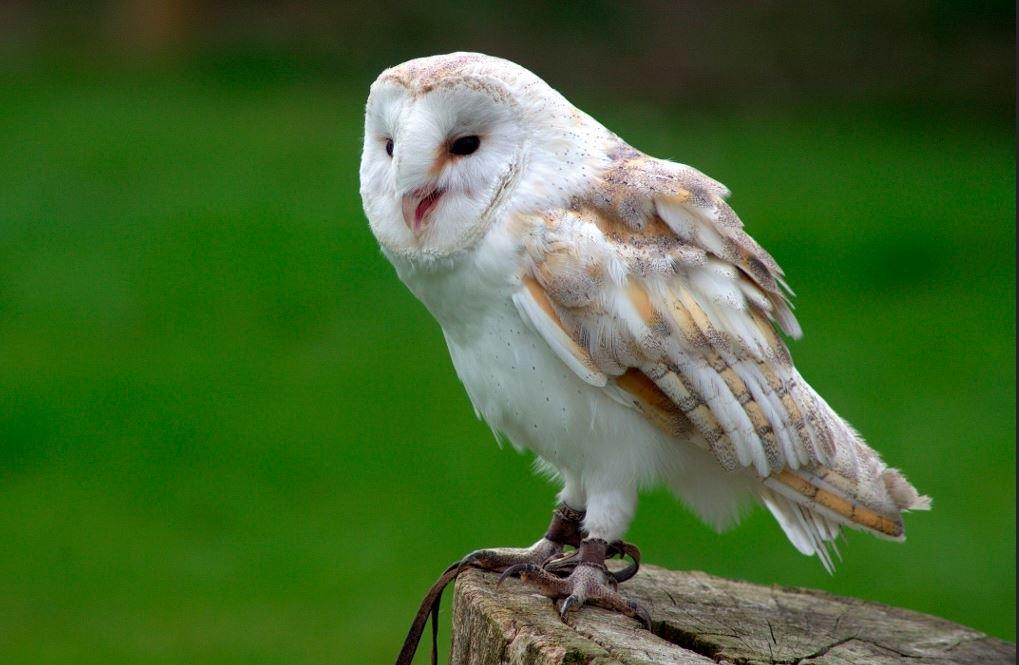In the quiet embrace of the night, owls glide effortlessly through the darkness, their flight marked by an almost supernatural silence. This remarkable ability has long fascinated scientists and engineers alike, inspiring a new wave of innovation in noise reduction technology. Harnessing the principles behind the owl’s silent flight, researchers at KTEN have developed a revolutionary approach that promises to transform how we manage sound in various environments. This breakthrough not only echoes the elegance of nature’s design but also opens the door to a future where noise pollution might be reined in with unprecedented efficiency.
Owls’ Silent Flight Unlocks Breakthroughs in Acoustic Engineering
Engineers and biologists have long been fascinated by the near-silent flight of owls, a natural marvel that allows these nocturnal hunters to swoop down on prey without a whisper. Recent studies have decoded the unique feather structure and wing dynamics responsible for this phenomenon, revealing micro-edge serrations and velvety textures that effectively scatter sound waves-dramatically reducing noise. Translating these biological insights, researchers have developed prototypes of noise-canceling materials and aerodynamic surfaces that mimic owl-wing features, promising revolutionary applications in everything from quiet drones to low-noise HVAC systems.
The potential benefits are vast and diverse, as this bio-inspired technology introduces a new paradigm for sound management. Key innovations focus on:
- Micro-structured surfaces that diffuse turbulent airflow and dampen sound generation.
- Flexible edge designs that adapt dynamically to changing air pressure, optimizing noise reduction in real-time.
- Eco-friendly material integration offering sustainable alternatives for industrial and consumer uses.
| Feature | Owl Wing | Engineered Application |
|---|---|---|
| Leading Edge Serrations | Fine, comb-like feathers | 3D printed noise-diffusing fins |
| Velvety Surface | Soft feather down | Sound-absorbent polymer coatings |
| Wing Flexibility | Adaptive wing shaping during flight | Variable geometry blades on rotors |
Understanding the Biology Behind Owl-Inspired Noise Reduction
Owls have perfected the art of silent flight through millions of years of evolution, making them the ideal biological model for noise reduction technology. Their feathers feature a specialized fringe along the leading edge, which breaks down turbulent airflows into smaller, less noisy currents. Additionally, the velvety texture of their wing surface absorbs sound frequencies that would typically create disruptive noise. This natural design minimizes aerodynamic noise, allowing owls to swoop down on prey undetected in near-total silence – a phenomenon engineers are now replicating using advanced materials and surface geometries.
To emulate this, researchers focus on several key features inspired by owl biology:
- Leading-edge combs: Mimic the comb-like feathers reducing turbulence
- Soft downy surfaces: Absorb sound waves to dampen noise emission
- Flexible wing morphology: Adapt to airflow patterns minimizing sound generation
| Owl Feature | Noise Reduction Mechanism | Engineering Equivalent |
|---|---|---|
| Leading-edge fringes | Reduces turbulence & noise | Micro-perforated blades |
| Velvety feather surfaces | Sound absorption | Acoustic foam coatings |
| Flexible wing structure | Adaptive airflow | Smart bendable materials |
Implementing Owl-Inspired Designs for Enhanced Environmental Quietness
Taking cues from the silent flight of owls, engineers have begun to incorporate nature’s acoustic mastery into urban and industrial environments. By mimicking the microscopic fringes on owl feathers-structures that diffuse sound waves-modern materials can now scatter noise with remarkable efficiency. This biomimicry not only minimizes reverberations but also transforms harsh sound into a softer, more tolerable ambient hum. Such innovations open new pathways for designing quieter offices, schools, and residential areas, where maintaining a calm atmosphere is increasingly vital.
The implementation of owl-inspired designs involves a combination of specialized materials and textured surfaces that work in harmony to absorb, diffuse, and redirect sound energy. Below is a simplified breakdown of key owl feather features translated into architectural applications:
- Leading edge serrations: Reduce wind turbulence and noise when applied to vent gratings and window frames.
- Velvety down: Absorbs high-frequency sounds, used in wall panels and floor coverings.
- Soft fringes: Scatter mid-frequency noise, integrated into ceiling tiles and noise barriers.
| Owl Feature | Acoustic Benefit | Application |
|---|---|---|
| Leading Edge Serrations | Reduces wind noise | Air vents, window frames |
| Velvety Down | Absorbs high-frequency sound | Wall panels, flooring |
| Soft Fringes | Diffuses mid-frequency noise | Ceiling tiles, noise barriers |
Key Takeaways
As owls continue to captivate us with their silent flight and keen senses, it’s inspiring to see how nature’s ingenuity can spark groundbreaking advancements in technology. This revolutionary noise reduction innovation, inspired by the owl’s silent wings, not only promises quieter environments but also paves the way for eco-friendly engineering solutions. By looking to the natural world, we’re reminded that sometimes the most cutting-edge ideas come from the oldest teachers. With technology and nature working in harmony, the future sounds a little bit quieter-and a lot more promising.
